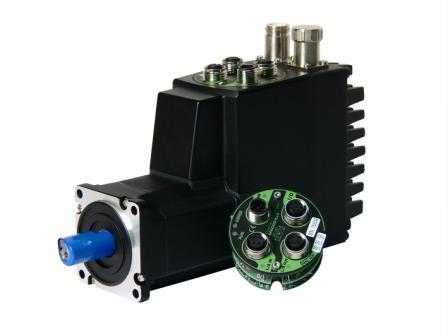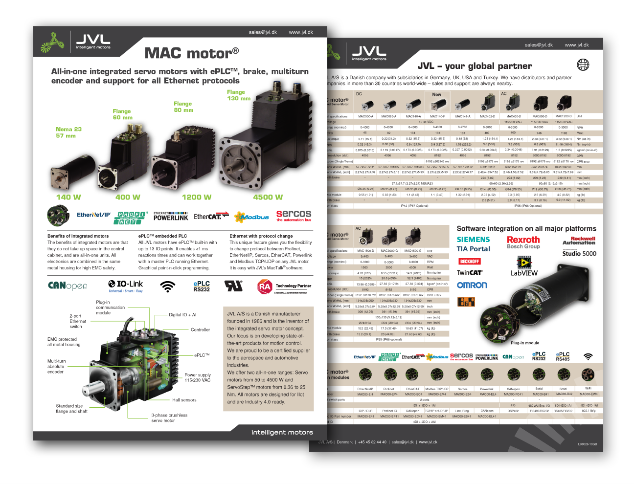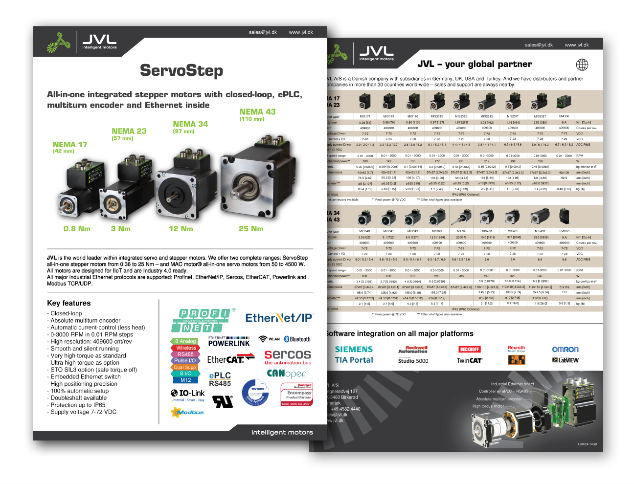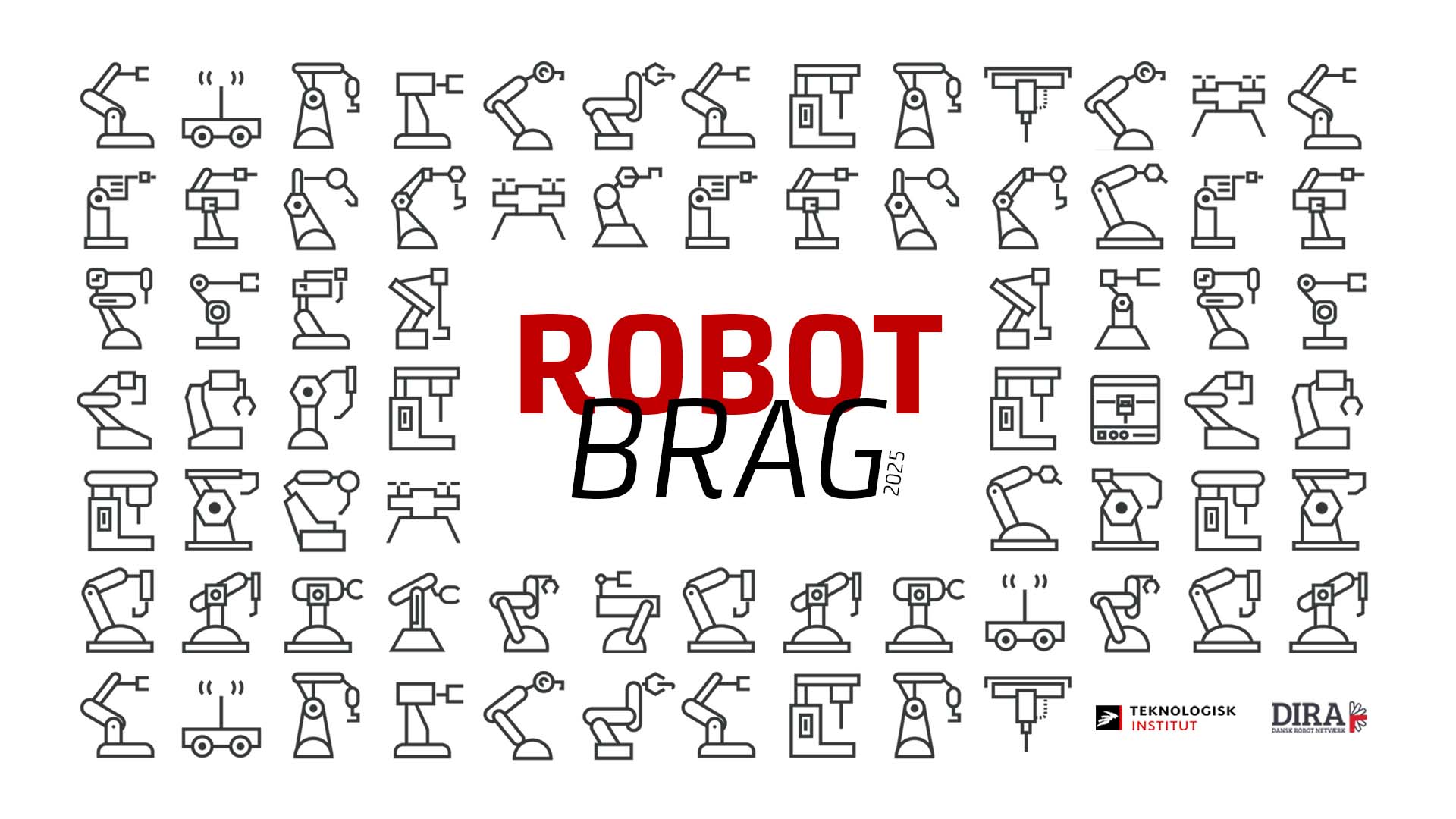
EtherNet/IP for JVL Integrated Servo Motors.

JVL is one of the leading companies in the field of integrated servo and stepper motors. For their medium power and new high power MAC motor’s, i.e. from 400 W to 3000 W, yet another expansion module has been added: The EtherNet/IP control module.
Beginning with BlueTooth and WLAN, JVL decided that established communication protocols in their expansion modules must be provided from well-known companies. This way, JVL can concentrate their efforts into the key area of developing leading integrated servo and stepper technology.
In the case of EtherNet/IP, the netX 50 series communication processor from Hilscher has been selected. One of the big advantages of this choice is that the expansion module hardware is the same no matter which Ethernet protocol is implemented thus minimizing the development time of e.g. EtherCAT, Profinet, Modbus TCP, Powerlink or Sercos III. Even future Ethernet protocols are supported as Hilscher develops drivers for them.
Beginning with BlueTooth and WLAN, JVL decided that established communication protocols in their expansion modules must be provided from well-known companies. This way, JVL can concentrate their efforts into the key area of developing leading integrated servo and stepper technology.
In the case of EtherNet/IP, the netX 50 series communication processor from Hilscher has been selected. One of the big advantages of this choice is that the expansion module hardware is the same no matter which Ethernet protocol is implemented thus minimizing the development time of e.g. EtherCAT, Profinet, Modbus TCP, Powerlink or Sercos III. Even future Ethernet protocols are supported as Hilscher develops drivers for them.
EtherNet/IP (Ethernet Industrial Protocol) was developed in the late 1990s by Rockwell Automation as part of Rockwell Automation's industrial Ethernet networking solutions. With little or no input taken from other ODVA members, Rockwell Automation gave EtherNet/IP its moniker and handed it over to ODVA, which now manages the protocol and assures multi-vendor system interoperability by requiring adherence to established standards whenever new products that utilize the protocol are developed.
Today, EtherNet/IP is most commonly used in industrial automation settings (e.g., water processing plants, manufacturing facilities, utilities) in the US and Asia for communication to and from Rockwell Automation's Allen-Bradley-brand control systems. However, other industrial automation and control system vendors, including Phoenix Contact, Opto 22 and WAGO Corporation, have developed programmable automation controllers and I/O capable of communicating via EtherNet/IP.
EtherNet/IP is an application layer protocol and it considers all the devices on the network as a series of "objects". EtherNet/IP is built on the widely used CIP (Common Industrial Protocol), which makes seamless access to objects from controlNet and DeviceNet networks.
EtherNet/IP makes use of existing network infrastructure (Ethernet) and the entire EtherNet/IP stack can be implemented in software on a microprocessor. No special hardware such as ASICs (Application-specific integrated circuits) or FPGA (Field Programmable Gate Arrays) are required for implementing EtherNet/IP.
EtherNet/IP is built on the standard TCP/IP stack, and makes use of all 7 layers of OSI reference model. Since EtherNet/IP makes use of Ethernet for physical layer, it becomes easier to tightly couple Enterprise Servers with the device data (sensors, actuators, drives, valves etc...).
As the technology for improving Ethernet physical layer progresses, EtherNet/IP will benefit indirectly. So, as the Ethernet physical layer technology advances from 10/100 Mbit/s to 1 Gbit/s, EtherNet/IP data transfers also get faster.
EtherNet/IP can be used in automation networks which can tolerate some amount of non-determinism. This is because Ethernet physical media, by definition, is not deterministic.
Read more about EtherNet/IP at: www.odva.org.
The JVL EtherNet/IP module enables high speed real time Ethernet motors communication directly to the drives:
- 100 Mbit/s communication speed
- Very fast response times
- Built-in 2-port switch for Daisy-chaining several drives
- Compatibility with standard industrial switches etc.
- User friendly LED indicators
- Rough M12 connectors for industrial environment
- Option for 4 digital inputs, 2 digital outputs and 2 analogue inputs
- 100 Mbit/s communication speed
- Very fast response times
- Built-in 2-port switch for Daisy-chaining several drives
- Compatibility with standard industrial switches etc.
- User friendly LED indicators
- Rough M12 connectors for industrial environment
- Option for 4 digital inputs, 2 digital outputs and 2 analogue inputs
For further information, please contact:
JVL Industri Elektronik A/S, Bregnerødvej 127, 3460 Birkerød, Denmark.
JVL A/S Bregnerødvej 127 DK-3460 Birkerød Denmark
Tel: +45 4582 4440 Fax: +45 4582 5550 E-mail: jvl@jvl.dk
Tel: +45 4582 4440 Fax: +45 4582 5550 E-mail: jvl@jvl.dk













